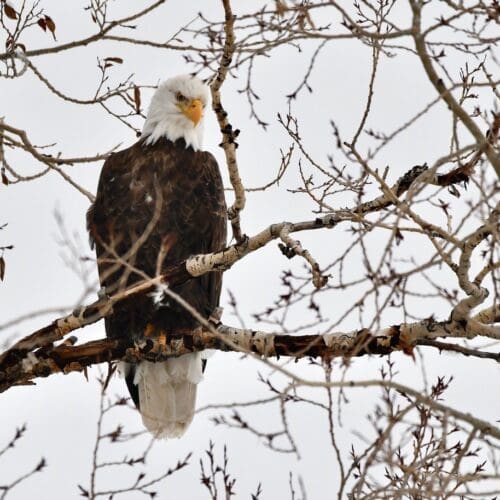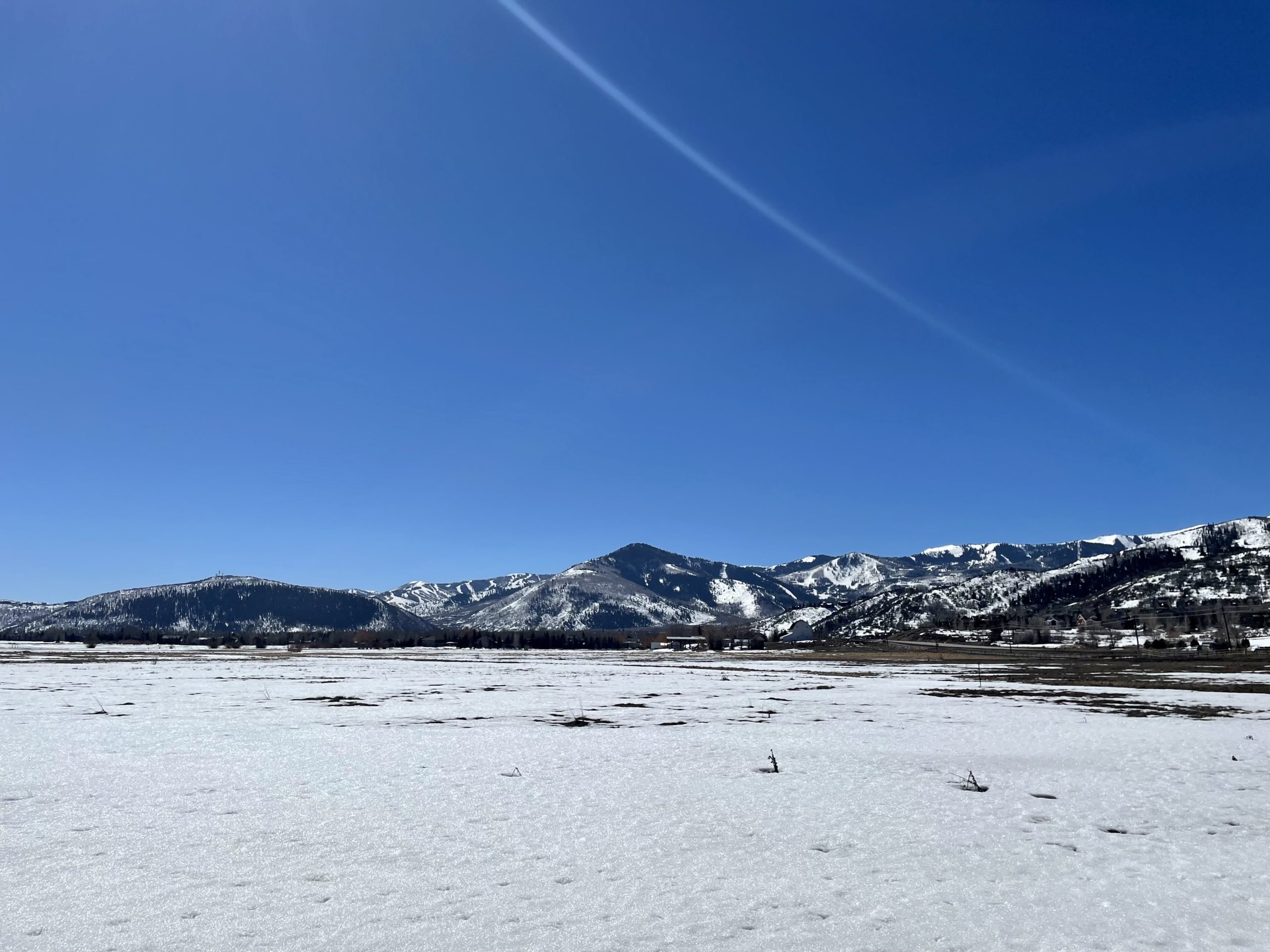Wildlife
Winter Wetlands
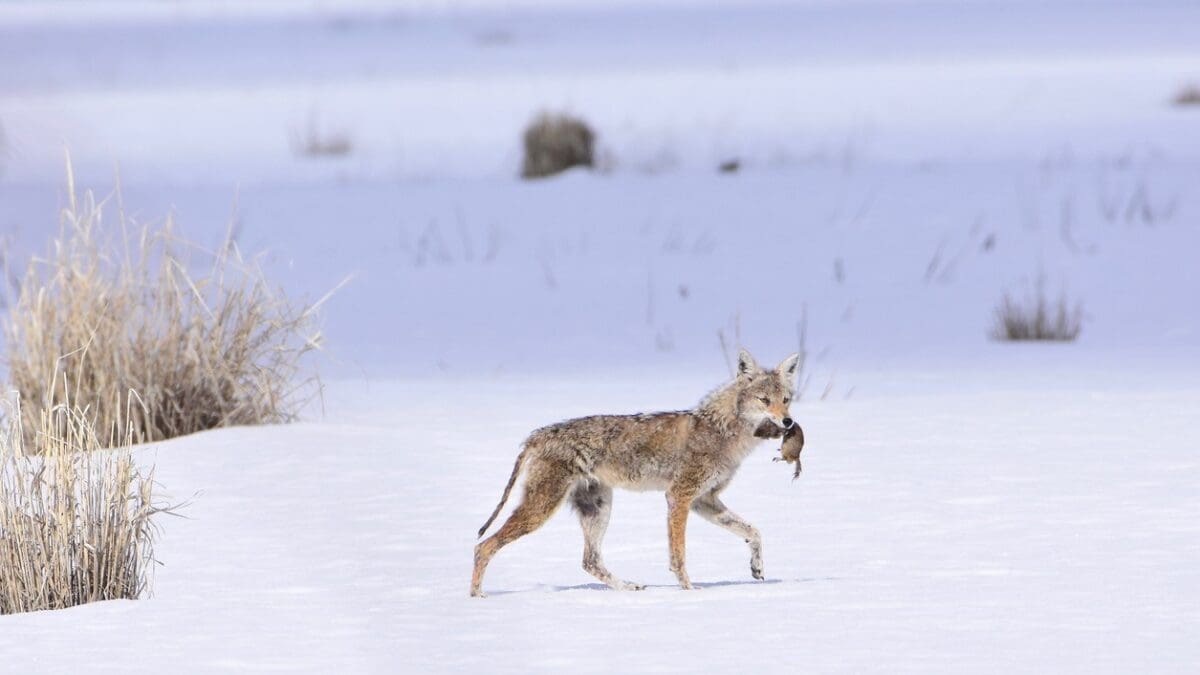
Photo: Michael Flaherty // Coyote with a winter meal
Winter visits to the Swaner Preserve and EcoCenter Uncover Hidden Delights
Plunging temperatures and blizzards combined with human encroachment on land means that for many species, survival during the winter is even more precarious. But that’s where the genius of camouflage comes in. Nothing is more effective at hiding in snow than a white coat.
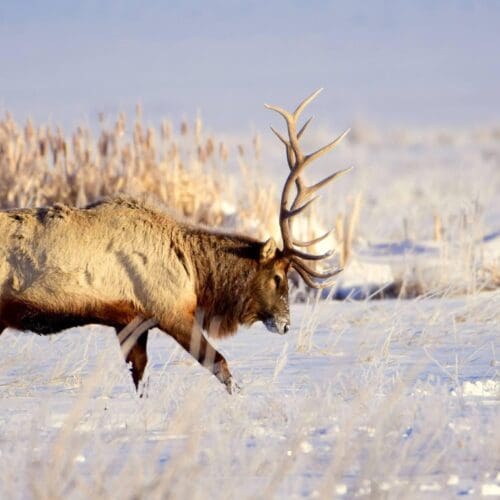
You may think it’s harder to spot birds and animals at the Swaner Preserve and EcoCenter during winter months. It is and it isn’t. “I get so excited when I see the first tracks in snow,” says Rhea Cone, Director of Conservation. “The Preserve just opens up and you can see what has been out there, even if you can’t see the animals themselves.” Ermines and white-tailed jackrabbits both trade their brown fur for white during this season, but they leave a lot of tracks in the snow.
“We see evidence of coyotes, bobcats, foxes, skunks, deer, elk, raccoons, mice and voles,” says Hunter Klingensmith, Director of Visitor Experience and Exhibits, “They all have distinctive track patterns.” You can also see who had dinner, and who was dinner.
“Sometimes you can see an ermine’s hole and where they caught a vole,” says Cone.
The Preserve sees a wide variety of birds during the season including Black-capped chickadees, house finches, eagles and hawks. “When a bird of prey takes off from the ground, it leaves wingtip marks on the snow,” says Klingensmith, “Sometimes you can even see the divot where they picked up an animal.”
This unique area is a healthy ecosystem that attracts weasels, beavers, deer, elk, snakes, insects, spiders, and more. The wetland part of the Preserve is closed to unguided public access to protect the habitat for the flora and fauna that call it home. “Animals can come and go,” says Cone, “We don’t keep them here or provide food or care.” Dawn and dusk are the best times to observe the abundant wildlife, although many can be seen and heard throughout the day.
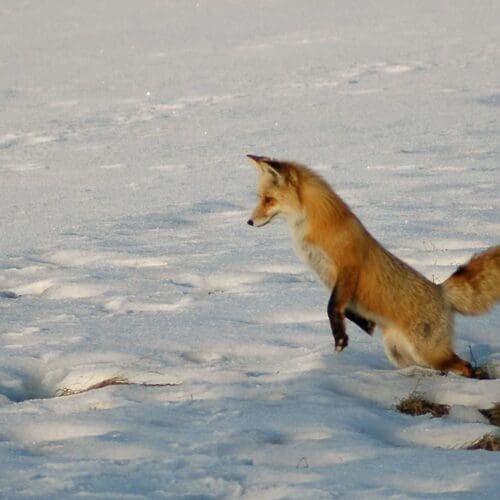
Of the total 1,200 acres, 850 acres are wetlands on the south side of I-80 and 350 acres are uplands north of I-80. There is a huge difference in the two areas with more than 200 species of plants. Because the Swaner Preserve and EcoCenter is an extension of Utah State University, preserving that diversity is a top priority.
“We’re protecting the wetland area,” says Klingensmith, “Only 1% of Utah has wetland area, and of that, 75% is the Great Salt Lake habitat. So, only .25% of Utah is made of wetland outside of the Great Salt Lake. And more than 80% of animals will use wetlands at some point in their life.”
Wetlands act as a flood control and their plants help to remove pollution from the water and soil, which is essential to having clean, healthy water. The Preserve features 10 miles of trails open to the public, a 4-story tower to view the property, and a variety of programs including educational field trips, traveling exhibits, walks, talks, workshops, youth education, and volunteer restoration opportunities.
“Although this area is protected in perpetuity, in order to keep it in its most beneficial state, restoration is an ongoing, necessary project,” says Klingensmith, “We’re surrounded by so much development and challenges such as water quality, invasive species, and the effects of past use of the land. We’re always working to keep it at its healthiest wetland state.”
Sign up for a Saturday morning nature walk or book a private guided tour with a naturalist to see evidence of wildlife.
For more information on programs, volunteer opportunities, or to donate, visit www.swanerecocenter.org.
